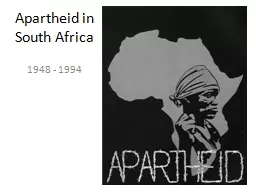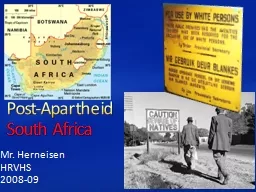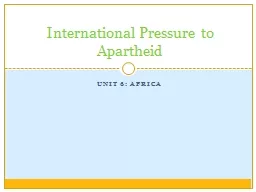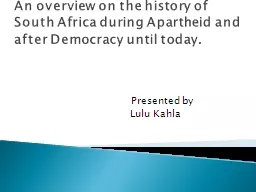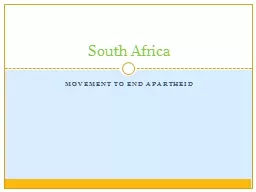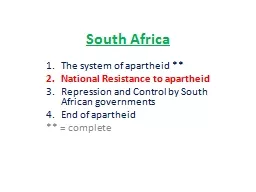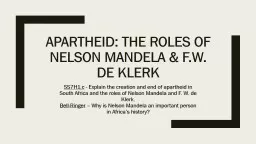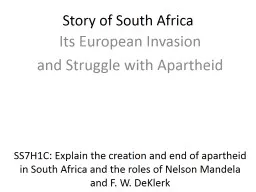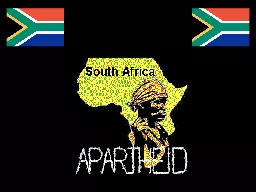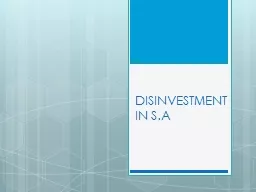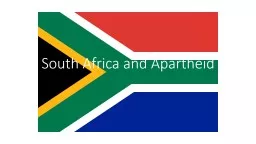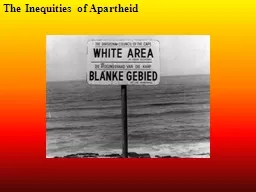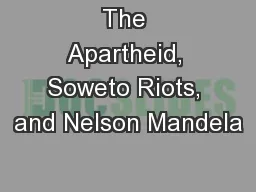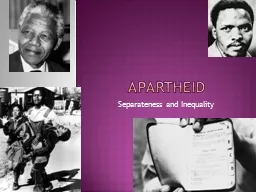PPT-Apartheid in South Africa
Author : conchita-marotz | Published Date : 2018-10-26
1948 1994 Native Tribes of South Africa Prior to European colonization of southern Africa there were hundreds of native tribes with distinct cultures and languages
Presentation Embed Code
Download Presentation
Download Presentation The PPT/PDF document "Apartheid in South Africa" is the property of its rightful owner. Permission is granted to download and print the materials on this website for personal, non-commercial use only, and to display it on your personal computer provided you do not modify the materials and that you retain all copyright notices contained in the materials. By downloading content from our website, you accept the terms of this agreement.
Apartheid in South Africa: Transcript
Download Rules Of Document
"Apartheid in South Africa"The content belongs to its owner. You may download and print it for personal use, without modification, and keep all copyright notices. By downloading, you agree to these terms.
Related Documents

